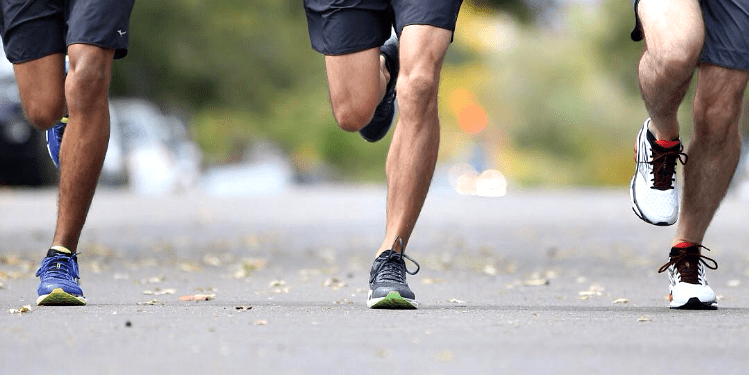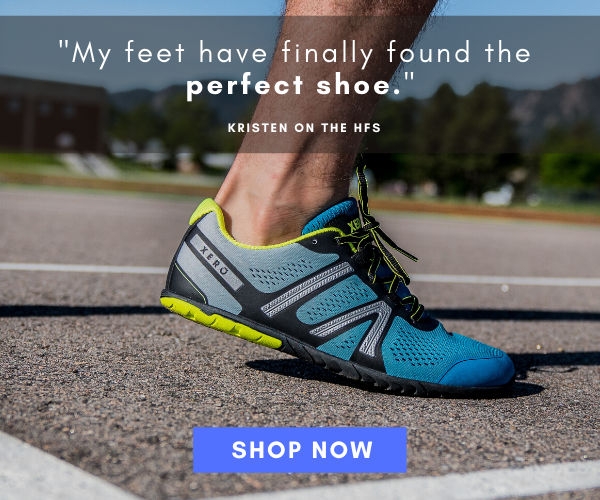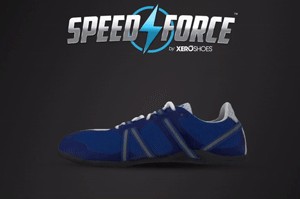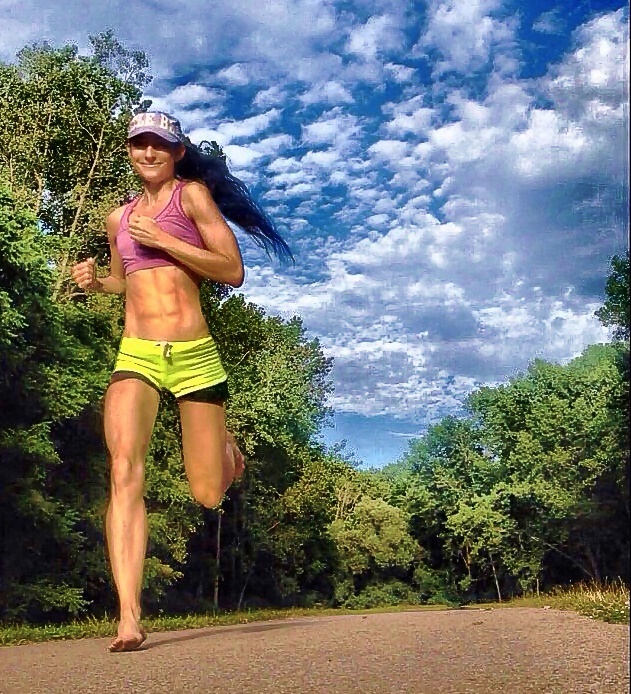A number of factors cause running injuries, and thick cushioned running shoes is one of them because they were found to push foot pronation out of tolerance, putting you in the danger zone for injury.

What is foot pronation and why too much of it is a major risk factor for injury?
- Foot pronation is the natural side-to-side motions of the hind-foot (back of the foot) during the touchdown and stance phases of running.
- When it stays within a safe range, foot pronation does what nature intended: it’s one of the body’s natural mechanical defences that helps reinforce sturdier ankle stability while attenuating shock (i.e. reduces impact) during running.
It’s an unfortunate fact, however, that thick cushioned running shoes cause the foot to pronate too much, resulting in over-pronation which forces the ankles to work harder in keeping footsteps more steadied through the touchdown and stance phases of running.Worse still, the increases in mechanical demands at the ankle ripples up to multiple sites on the leg, like the shin and knee and was found to be a net contributor to ankle sprains, shin splints and runners knee.


Many studies have found that thick cushioned running shoes leads to over-pronation by causing ground-contact time of the foot to be longer than it should. What’s most problematic about this is the foot wrestles longer with the ground, resulting in greater shifts in straining motions of heel which doubled pronation-inducing torque as compared with running barefoot or in barefoot-inspired running shoes.
This piece of data brings more confirmation that footwear strongly affects how the foot interacts with the ground during running whereby immobilizing the foot too much with cushioned running shoes, which are often too tight and inflexible, causes mechanical displacements at the foot-ankle complex that alter the kinetic chain up the leg, easily setting the stage for injury. This line of evidence also makes it clear that not all running shoes play the role that they are marketed to play in preventing injury!

Last but not least, this finding can be added to the growing list of injurious risk factors caused by conventional running shoes and how such footwear progressively tears down the proper function of the feet.
How Barefoot Running Improve Footstep Stability
Even though the feet have full freedom of movement when you run barefoot, pronation is more controlled and sharply limited because barefoot running naturally engages more stable mechanics that include a forefoot strike landing, a higher cadence and a shorter stride length which collectively are proven mechanical imperatives that put a tighter rein on pronation by significantly reducing ground-contact time. This is one of the important reasons that you’re always making progress when you run barefoot because you’re making the foot better at controlling pronation.

This is what makes barefoot running or even running in barefoot-like running shoes so effective in narrowing the time the foot lingers on the ground, averting disordered foot motions, like over-pronation.
Knowing this reminds us that when it comes to safeguarding and improving your foot mechanics, less protection is always the best protection!

References:
Daoud et al. Foot strike and injury rates in endurance runners: a retrospective study. Med Sci Sports Exerc, 2012; DOI: 10.1249/MSS.0b013e3182465115
Denoth J. Load on the locomotor system and modeling. In Nigg BM, editor. Biomechanics of the Shoe. Champaign IL: Human Kinetics, 1986. p. 64-116.
If you’d like, you can support Run Forefoot and help keep it going by making a donation in any amount of your choosing:

Or, you can also support Run Forefoot by shopping at the following top minimalist shoes brands, and be sure to bookmark the links:
Be Lenka: https://www.dpbolvw.net/click-7600968-14330828
FeelGrounds: https://www.feelgrounds.com/?p=RunForefoot
Xero Shoes: https://xeroshoes.com/go/Run_Forefoot
Iguaneye: https://www.iguaneye.com/?ref=8tfXVc92
Soft Star Shoes: https://shrsl.com/3mp1b
Wilding Shoes: https://bit.ly/3lIygQP
Earth Runners: https://earthrunners.com/?rfsn=6763579.f7f9c9
Vivobarefoot: https://shrsl.com/3kvih
Zappos: https://goo.gl/J1CeAd
Bretta Riches
BSc Neurobiology; MSc Biomechanics candidate, ultra minimalist runner & founder of RunForefoot. I was a heel striker, always injured. I was inspired by the great Tirunesh Dibaba to try forefoot running. Now, I'm injury free. This is why I launched Run Forefoot, to advocate the health & performance benefits of forefoot running and to raise awareness on the dangers of heel striking, because the world needs to know.
Latest posts by Bretta Riches (see all)
- Can You Run In Barefoot Shoes? Yes, But DON’T Heel Strike! - 21/07/2024
- Why Cushioned Running Shoes Are Really Bad for Your Feet - 19/07/2024
- Do Cushioned Running Shoes Cause Injuries? - 17/07/2024
